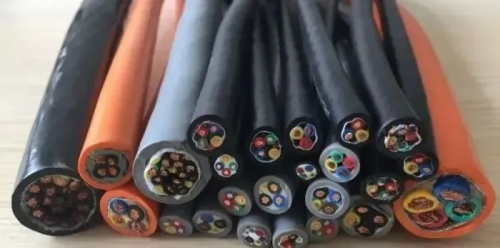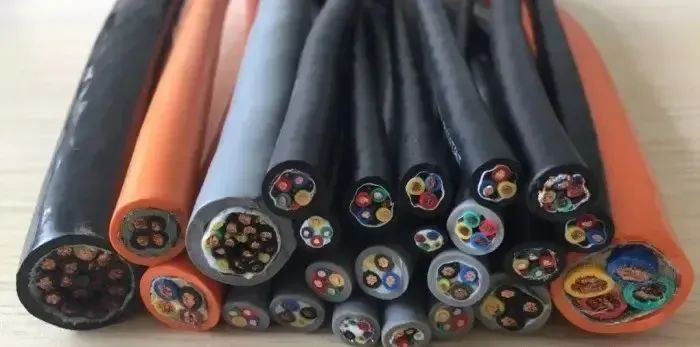The function of the wire harness has been expanded from ordinary signal transmission to data transmission. Due to the limitation of wire transmission signals, the development of the whole vehicle is increasingly hindered. Therefore, the extensive use of optical cables will usher in the third leap in the manufacturing technology of automotive wiring harnesses. Optical cables have the advantages of fast transmission speed, large capacity, small size, strong confidentiality, and good anti-interference. They will soon become an important and preferred material for future automotive data processing and exchange, bringing the power and signal distribution system into a new historical stage of development.
Metal materials for automotive wiring harnesses and cables
Automotive wires are also called low-voltage wires. They are different from ordinary household wires. Ordinary household wires are single-core copper wires with a certain hardness. Automotive wires are multi-core copper soft wires, some of which are as thin as hair. Several or even dozens of soft copper wires are wrapped in plastic insulation tubes (polyvinyl chloride), which are soft and not easy to break.

The requirements for materials of automotive wiring harnesses are very strict: including its electrical performance, material dispersion, temperature resistance, etc., which are higher than those of general wiring harnesses, especially those related to safety: such as steering control systems, brakes and other important components, the requirements are more stringent. The metal materials used in automotive wiring harnesses and cables are as follows:
Copper: Its electrical conductivity is second only to silver, and its thermal conductivity is second only to gold and silver; it is corrosion-resistant, non-magnetic, has good plasticity, is easy to weld, and has a wide range of uses. Copper alloys are mainly used to improve copper’s wear resistance, corrosion resistance, and mechanical and physical properties.
Silver: It has the highest electrical and thermal conductivity of metals, good corrosion and oxidation resistance, and is easy to weld; it is mainly used for plating and coating; it is mainly used as high-temperature resistant wire and (note: according to the principle of skin effect) as a conductor for high-frequency communication cables.
Aluminum: Its electrical conductivity is second only to silver, copper and gold; it has good thermal conductivity, good corrosion resistance, average mechanical strength, good plasticity and low specific gravity. Its disadvantages are low tensile strength and difficulty in welding. Aluminum alloys are mainly used to improve the mechanical strength, heat resistance and weldability of aluminum.
Gold, nickel: used for high temperature resistant wire.
Iron (steel): often used as reinforcing material for composite conductors, such as steel-core aluminum stranded wire, copper-clad steel, aluminum-clad steel wire, etc.
Zinc: Used as a coating for steel wire/steel strip/iron conductors to prevent corrosion.
Tin: Used as a coating for steel wire/copper wire to prevent corrosion and facilitate the welding of copper wire.
Types, specifications and standards of automotive wiring harness cables
The type of wire selected for automotive wiring harness cables plays an important role in the performance of automotive wiring harnesses. To design a good wiring harness, the type of wire cannot be chosen carelessly. Wires can be divided into electronic wires and cable wires according to their properties: electronic wires include unshielded wires and shielded wires (UL1571 wires have shielded wires, and other electronic wires are generally unshielded wires); cable wires also include unshielded wires and shielded wires, such as UL2464, which can be divided into these two types. According to the standard: UL/CSA (safety wire), CCC (national standard wire), VDE (German standard wire) PSE (Japanese standard wire), etc. Among them, UL/CSA, VDE, CCC are more common wires, and UL/CSA wires are currently the most used.
Precautions for purchasing automotive wiring harness cables
Wires and cables are the main carriers of power transmission. When purchasing automotive wiring harness cables, pay attention to the following points: When purchasing wire and cable products, you should observe whether the product certificate is fully marked with relevant information such as product model, specification, rated voltage, number of cores, production date, implementation standard, license number, etc. The physical surface of the product should be printed with the continuity mark of the factory name, product model and rated voltage, and verify whether the relevant information of the two is consistent. The outer plastic skin of the wire is bright in color and fine in texture. Whether there are burrs or protrusions on the surface, whether the appearance is smooth, round, and uniform in color, and the conductor uses electrolytic copper, and the outer layer is bright and slightly soft. Look at the cross-section of the cable again. The copper (aluminum) core should be in the middle, and the thickness of the plastic layer should be uniform. There are length marks on the certificate. You can first estimate the length of a circle of wire in the finished product packaging, and then count the number of circles of the wire reel to estimate the approximate length of the entire reel. In addition, pay attention to the diameter of the conductor and look at the length and cross-section of the cable. When choosing wire and cable products, it is best to consult an experienced professional electrician and use a cable with a suitable cross-sectional size and voltage level according to your own power load.










